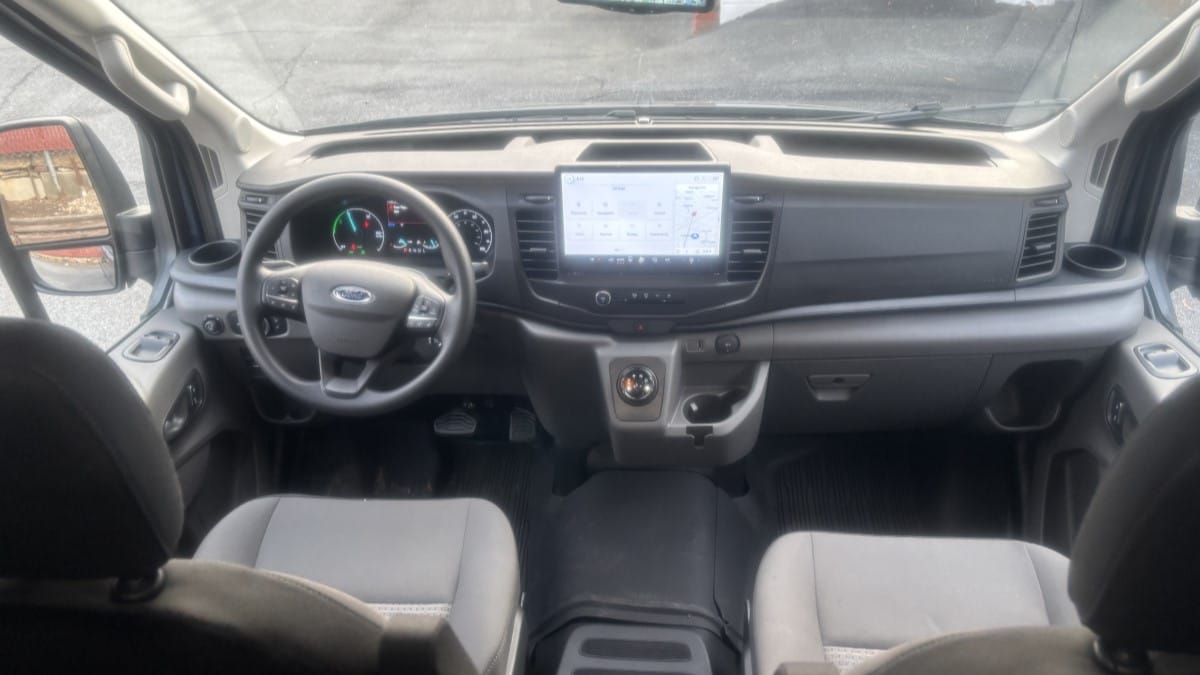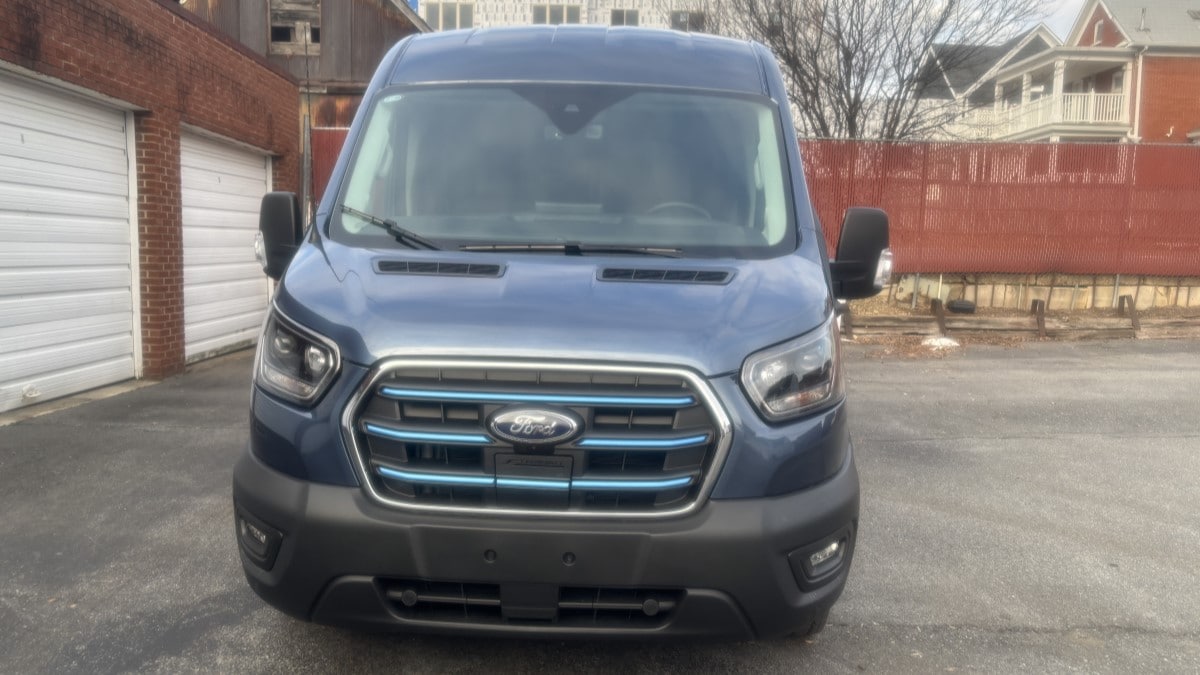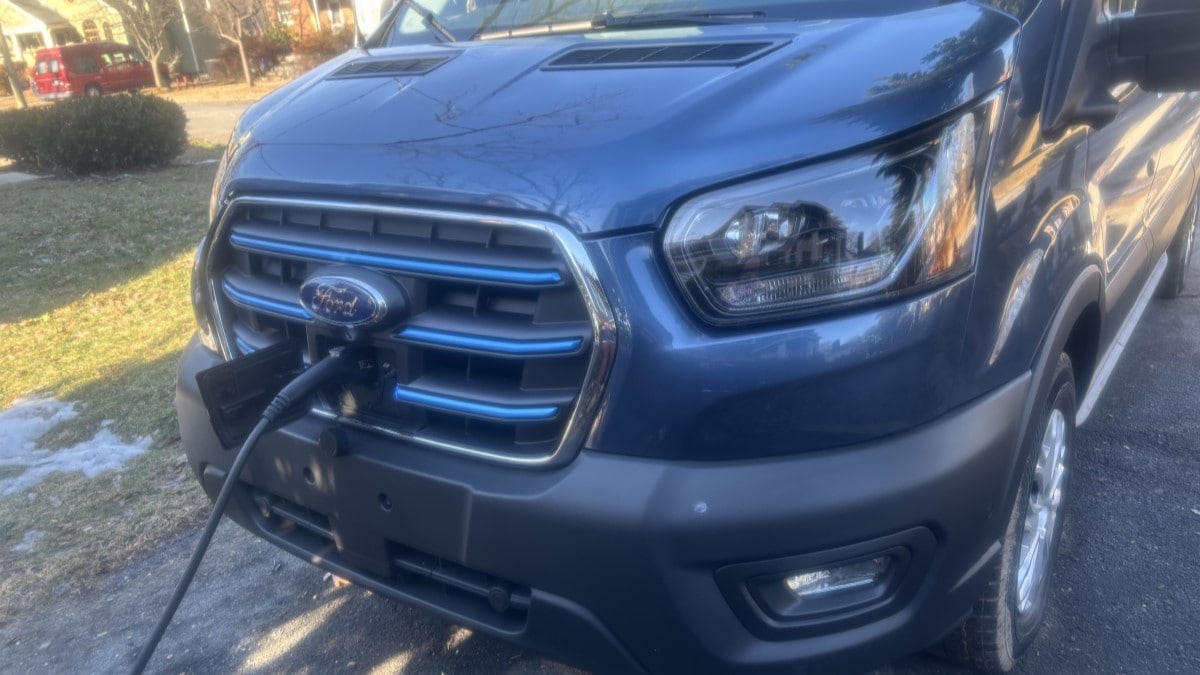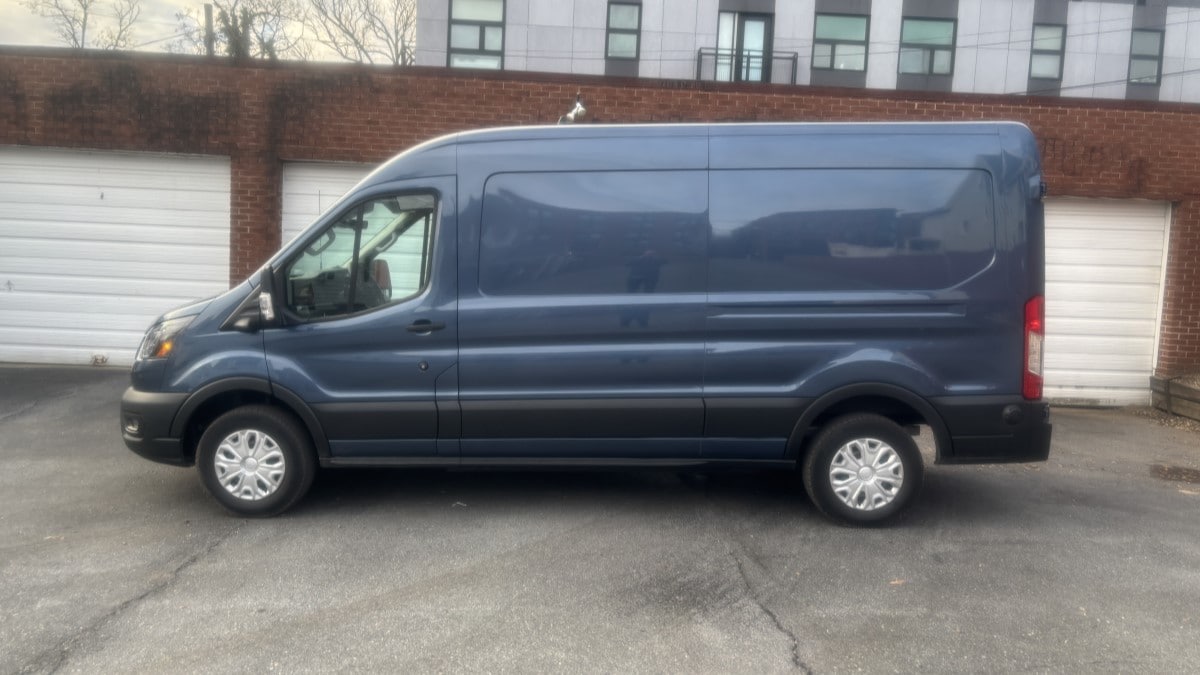When most car designers set out to design a new electric car, they want to make it stand out.
They’re often excited about the prospect of more acceleration. If you haven’t had the experience yet, you may not know — electric vehicles (EVs) accelerate quicker than gas-powered equivalents because they have 100% of their torque available at all times, with no buildup.
Designers look for ways to make their EVs look like EVs, so the neighbors will know you took the big step.
And they use new technologies to make the most of range, like low-rolling-resistance tires and heated surfaces rather than heated air, both of which can stretch a few more miles out of a battery.
Not this group, though. The team that created the 2025 Ford E-Transit takes special pride in doing none of that. A Ford representative told me the goal was to create a vehicle that could hide among a flock like one of those moppy sheepdogs that look like sheep.
If you don’t know what to look for, you might never know the Ford E-Transit wasn’t a Transit. That, oddly enough, is genius.
I spent a week with the E-Transit, hauling a few loads to the dump and driving it mostly on city streets. I walked away, deeply impressed with what the engineering team pulled off. You can tell this is electric, but only in a few pleasant ways.
If you’re a fleet manager buying a few new vans a year to integrate into your existing stable, that’s excellent news.
Ford even matches the prices. Both gas Transit and electric E-Transit cargo vans start at the same price, to the dollar, for 2025. Comparing cargo vans configured with a low roof and a long wheelbase (entry-level E-Transit), that means $53,095 — a $51,000 base price and a $2,095 delivery fee.
My test model had a few upgrades, including a heavy-duty cargo floor and the Pro Power Onboard system, which adds power outlets in the cargo area. It carries an asking price of $55,920 after the $2,095 delivery fee.

‘We Changed as Little as Possible’
It would take a knowing eye to spot an E-Transit in a parking lot of Transit vans. The difference? The horizontal bars on the grille are blue. That and a door for the charging port located dead center under the front Ford emblem are the only differences.
Oddly enough, I ran into a few knowing eyes in my week in the van. Twice, roadside work crews flagged me down to ask about the range.
There’s logic to the similarity. Ford Transit Brand Manager Sean Masson tells me the goal was to make it easy for fleet operators to fold E-Transit models into existing fleets of gas-powered Transit vans.
Ford built in as many cross-functional parts as possible. Every body panel is the same, and even the tires are the same. Ford might have gotten longer range out of an EV-specific set of tires. But knowing that fleet managers buy shipments of tires for the motor pool, they didn’t want to burden them with the need to stock two types of tires.

A Cabin You’ll Recognize, Too
That means nearly identical controls as well. The driver’s instrument cluster has barely changed from the conventional Transit’s setup. A battery meter replaces the gas gauge, and the 12-inch multifunction touchscreen has an additional menu to track the charging process.
That’s it for changes. A driver used to the Transit could hop into the E-Transit without relearning anything.
Ford does recommend that most buyers choose a bulkhead behind the rear seats. That way, you don’t have to heat or cool the giant cargo space. However, it’s an option because Ford deliberately wants as few “forced features” as possible so buyers can build out the cargo space to suit their needs.

A Smoother Driving Experience
Only two times will you notice you’re in an E-Transit instead of a gas-powered Transit.
One is when you mash the accelerator. The E-Transit isn’t precisely quick. It is still a full-size cargo van — a high-roofed one, in the case of my tester. However, it’s quicker than any gas-powered cargo van I’ve ever experienced.
The ability to merge effortlessly into highway traffic, even with little run-up, is refreshing.
The other comes on any sort of rough road. A conventional gas-powered van has most of its weight up front with the engine. That can leave vans tail-happy and rough-riding when empty. The characteristic squeak and crash of an empty cargo van’s ride comes from the rear suspension, designed to handle the weight of cargo, feeling stiff with nothing much to carry.
That’s not a problem here. The E-Transit has an 89-kWh battery centered under its floor, distributing weight almost evenly. It’s an astonishingly smooth ride.
The base E-Transit is rear-wheel drive (RWD), whereas most gas-powered vans are front-wheel drive (FWD). The difference is barely noticeable in practice, though it might contribute to that smoothness.
It’s hard to upset the E-Transit’s suspension. It floats over speed bumps with liquid grace and barely a squeak from the springs.

Specific Applications, but for Those, It may be a Better Choice
If you’re accustomed to Transit vans, the E-Transit asks almost nothing of you. It just gives you a more pleasant ride and a little extra power, with no other appreciable changes.
For fleet managers, its range is a big shift. Range is an inexact science with vans — it’s going to vary immensely based on the buildout’s weight, whether you choose a high-, mid-, or low-roof, and so on.
I charged my high-roof, extended-length model to full, and the meter predicted I’d get 129 miles from it. Its estimates seemed perfectly accurate when driving around town.
That’s easily enough for most urban applications with fixed routes and reliable access to charging off-shift. However, it makes this model impractical for some parts of the country and for rental fleets.
If it fits your needs, though, you should give long, careful thought to the E-Transit. Masson tells me the average E-Transit customer spends 48% less on maintenance costs for this than for a gas-powered equivalent. With a more pleasant ride and no learning curve, that’s almost all pluses and no minuses.








